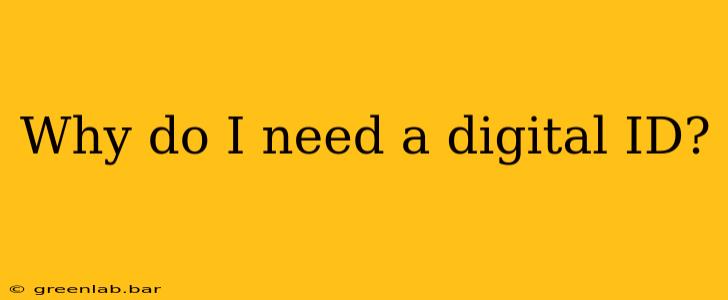In today's increasingly digital world, the question isn't if you need a digital ID, but when you'll need one and what kind will best suit your needs. The shift from physical documents to digital equivalents is rapidly accelerating, impacting everything from accessing online services to proving your identity in everyday transactions. Understanding the benefits and implications of digital IDs is crucial for navigating this changing landscape.
The Growing Importance of Digital Identity Verification
Digital IDs are essentially electronic representations of your identity, containing verifiable information such as your name, date of birth, and address. They're not just convenient; they're becoming increasingly necessary for a wide range of activities, including:
1. Online Banking and Financial Transactions
Securely accessing your bank accounts and making online payments requires robust identity verification. Digital IDs provide a secure and streamlined method to authenticate your identity, reducing the risk of fraud and unauthorized access.
2. Government Services and Benefits
Many government agencies are transitioning to online services, requiring citizens to use digital IDs for accessing benefits, submitting tax information, or renewing licenses. This simplifies processes and makes government services more accessible.
3. Healthcare and Medical Records
Digital IDs can play a critical role in securing access to medical records and streamlining healthcare interactions. They can help prevent identity theft and ensure that only authorized individuals can view sensitive health information.
4. Travel and Border Control
Several countries are exploring and implementing digital travel credentials, using biometric data and digital IDs to speed up border crossings and enhance security. This simplifies travel and improves efficiency for both travelers and authorities.
5. Employment and HR Processes
Digital IDs can streamline employment verification and onboarding processes. They can facilitate background checks, securely share personal data with employers, and help prevent identity fraud in the workplace.
Types of Digital IDs: A Quick Overview
The landscape of digital IDs is diverse, encompassing various technologies and levels of security. Some common types include:
- Mobile Driver's Licenses (mDLs): Digital versions of traditional driver's licenses, stored securely on a smartphone.
- National Digital Identity Systems: Government-backed initiatives designed to create a secure and unified digital identity infrastructure.
- Private Sector Digital Identity Platforms: Services provided by private companies that allow users to create and manage their digital identities.
- Decentralized Digital Identities: Emerging technologies leveraging blockchain and other distributed ledger technologies to provide greater user control and security.
Weighing the Benefits and Risks
While the benefits of digital IDs are substantial, it’s crucial to be aware of potential risks:
- Data Privacy and Security: The security of your digital ID is paramount. Choose providers with strong security measures and ensure your data is protected from unauthorized access or breaches.
- Potential for Bias and Discrimination: The algorithms used in some digital identity systems can inadvertently perpetuate biases, potentially leading to discriminatory outcomes.
- Accessibility and Digital Divide: Not everyone has equal access to technology, potentially creating a digital divide and excluding some individuals from accessing essential services.
Conclusion: Embracing the Future of Identity
The adoption of digital IDs is inevitable. By understanding their benefits, limitations, and security implications, you can make informed decisions about how to manage your digital identity and leverage its potential while mitigating risks. Staying informed about advancements in digital identity technology is crucial in navigating this rapidly evolving landscape and ensuring your personal information remains secure and accessible.

